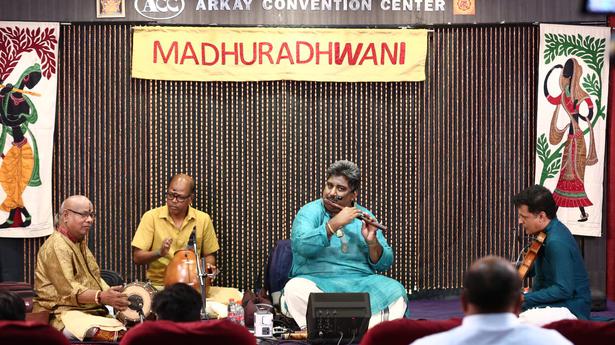
Know the changes that Palakkad Sreeram has made in the flute
The Hindu
Palakkad Sreeram’s recent performance featured his modified flute
While some men walk on the path laid by their predecessors, others try to improve and make it more comfortable. This constant striving towards perfection has been the reason for mankind’s continuous betterment. Like in other fields, great experiments have been made in the field of music, too.
A flautist produces magic with just a bamboo reed that has no strings, frets or keys. You might hear a smooth sound, but getting the right gamakas and glides are not easy. And, it is not possible to play all the sangathis using the same flute. That is why a flautist uses different kinds during a performance.
Palakkad K.L. Sreeram, vocalist, multi-instrumentalist and self-taught flautist (he considers N. Ramani his ‘manasika guru’), spent a lot of time modifying his flute during the lockdown. His attempts at altering the hole used for shuddha madhyamam and adding another for antara gandharam fetched the desired result. For gliding notes, he added a hole in the space available for madhyamam. As there are already seven holes, he used his thumb for the eighth and his little finger for grip. Thus, it seemed easier to produce the desired swaras and sangathis.
When he discussed his experiment with veteran mridangist Srimushnam Raja Rao, the latter approved and suggested he should perform a full-length concert with this new flute.
Sreeram recently performed under the auspices of Madhuradhwani that was a sort of an ‘arangetram’ for this instrument.
The concert was lively throughout, beginning with the Saveri varnam ‘Sarasooda’ and featuring lovely raga delineations of Ranjani (‘Durmarga charadhamulanu’ - Tyagaraja) and Kalyani (‘Etavunara, Tyagaraja). The Arabhi Pancharatnam ‘Sadinchane’ and Syama Sastri’s ‘Marivere’ in Anandabhairavi also shone distinctly. The niravals and swara repartees with Embar Kannan’s violin were delightful. Kannan’s raga essays flowed like fountains of melody.
Srimushnam Raja Rao on the mridangam and N. Guruprasad on the ghatam enhanced the appeal greatly. The intricately woven thani was enjoyable. ‘Maname unakku kavalillai’ (Varamu) by T.M. Thyagarajan was one of the compositions presented after the tani avartananam.











